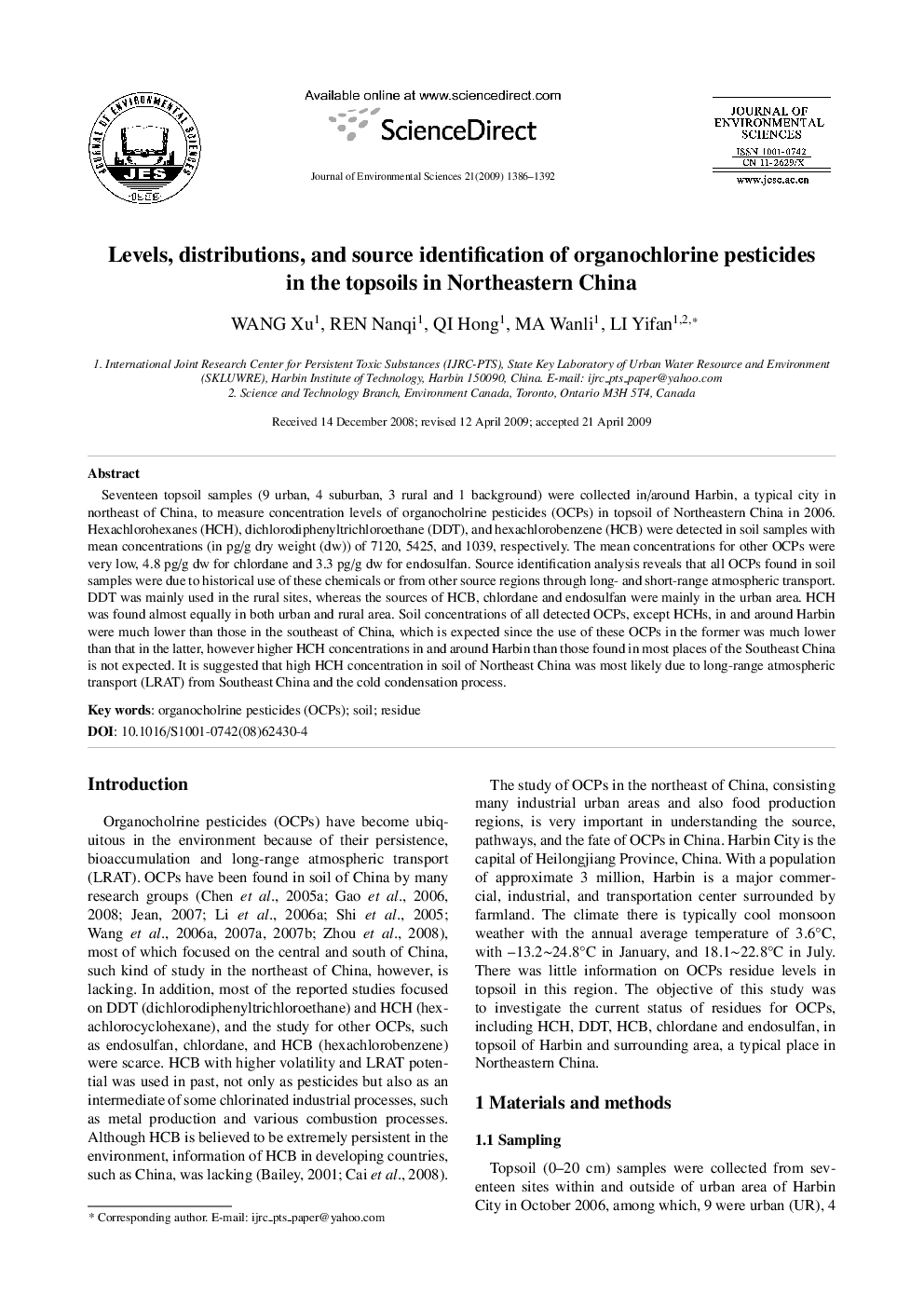| کد مقاله | کد نشریه | سال انتشار | مقاله انگلیسی | نسخه تمام متن |
|---|---|---|---|---|
| 4455874 | 1312534 | 2009 | 7 صفحه PDF | دانلود رایگان |

Seventeen topsoil samples (9 urban, 4 suburban, 3 rural and 1 background) were collected in/around Harbin, a typical city in northeast of China, to measure concentration levels of organocholrine pesticides (OCPs) in topsoil of Northeastern China in 2006. Hexachlorohexanes (HCH), dichlorodiphenyltrichloroethane (DDT), and hexachlorobenzene (HCB) were detected in soil samples with mean concentrations (in pg/g dry weight (dw)) of 7120, 5425, and 1039, respectively. The mean concentrations for other OCPs were very low, 4.8 pg/g dw for chlordane and 3.3 pg/g dw for endosulfan. Source identification analysis reveals that all OCPs found in soil samples were due to historical use of these chemicals or from other source regions through long- and short-range atmospheric transport. DDT was mainly used in the rural sites, whereas the sources of HCB, chlordane and endosulfan were mainly in the urban area. HCH was found almost equally in both urban and rural area. Soil concentrations of all detected OCPs, except HCHs, in and around Harbin were much lower than those in the southeast of China, which is expected since the use of these OCPs in the former was much lower than that in the latter, however higher HCH concentrations in and around Harbin than those found in most places of the Southeast China is not expected. It is suggested that high HCH concentration in soil of Northeast China was most likely due to long-range atmospheric transport (LRAT) from Southeast China and the cold condensation process.
Journal: Journal of Environmental Sciences - Volume 21, Issue 10, 2009, Pages 1386-1392